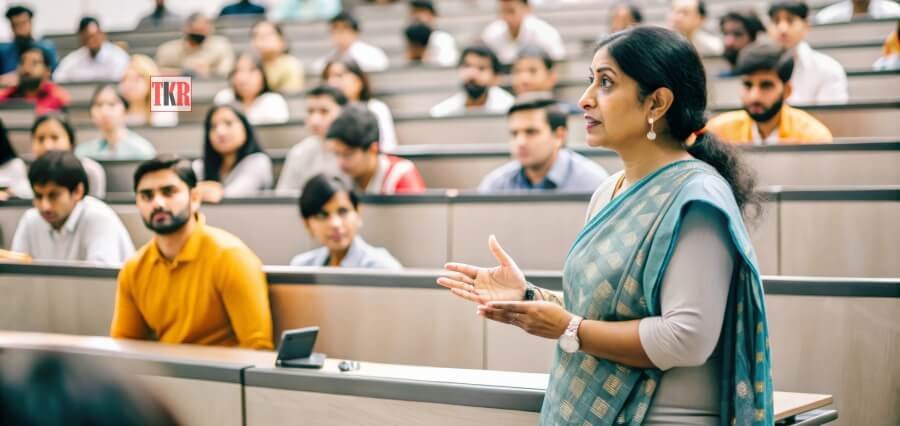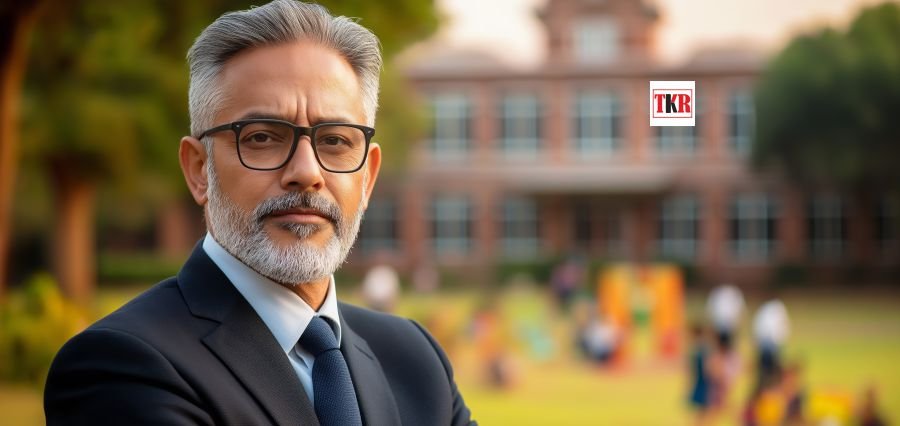The Principal Difference
Since time is immemorial, and as we move into the digital age, teachers in India have brought wisdom, knowledge, and the spirit of pursuit to hundreds of young minds every single day of the year, round the clock. In every part of the country, Indian educators are inspiring young minds to dream bigger, work harder, and strive higher.
In this article, we dig into the various ways these educators inspire excellence.
Teaching with Passion
Passion for teaching is one of the characteristics of a great Indian educator. Whether it’s a school teacher at a village or a teacher at a leading university, they are passionate about their work. That passion has helped to keep students interested and excited about learning.
Consider the case of Dr APJ Abdul Kalam, the “Missile Man of India” he was not only a visionary scientist but also an inspirational teacher. Teaching was always something that he loved to do, he said. He didn’t shy away from meeting students and inspiring them even after holding the position of the President of India. His dedication is an example of what Indian teachers can do to engage those young minds.
Focusing on Values and Character
Indian teachers not only teach their subjects, math, science, or history. They also become responsible for encouraging their students’ strong values and good character. Respect, truthfulness, kindness, and a code of conduct are frequently stressed in Indian classrooms. Retention of these values for life only makes students better citizens.
Teachers often lead by example. The students are being taught important life lessons about honesty and discipline. Pioneers such as Savitribai Phule, who became India’s first female teacher, showed how education can dismantle barriers and create a more equal world. Her legacy still has the power to motivate tens of thousands of teachers to this day.
Using Creative Teaching Methods
The best Indian educators are also the best thinkers. They experiment with different approaches to make learning fun and effective. Many teachers leverage storytelling, visual aids, games, and real-life situations to make it easier for pupils to grasp complex subject matter.
Teachers in rural locations, where resources can be scarce, come up with inventive approaches to keep children engaged. Some teachers rely on local materials or hold classes outside in the open areas. Still others teach students in digital ways, using mobile phones, YouTube videos, or apps.
One such success story is Anand Kumar, founder of the “Super 30” program in Bihar. He coaches students from deprived backgrounds to crack India’s toughest engineering entrance exam, the IIT-JEE. His teaching style of hugging and personal relationships has transformed many lives.
Encouraging Curiosity and Confidence
Esther is an Indian teacher who inspires excellence by motivating pupils to be curious and pursue new questions. In addition to looking at marks, good teachers also encourage students to think deeply and express themselves clearly.
They are also confidence builders of students as they value and push them to snap out of fear. Many Indian teachers give individual attention to students who are below par. This smattering of support makes it possible for students to have a sense of belief in themselves.
Ranjitsinh Disale, a school teacher from Maharashtra, won the Global Teacher Prize for championing the education of young girls. He translated books into the local languages, and he brought a new way of teaching so that learning would be fun and learning would be substantial. His work has been celebrated internationally.
Adapting to Change
Nowadays, the field of education is evolving very quickly. Online classes, digital equipment, and AI-driven learning have become universal. Indian Teachers are fast catching up with this change. They are acquiring new skills and employing technology to work with more students.
Amid the pandemic, many teachers continued to teach students remotely, using video calls, WhatsApp messages, and online platforms. This demonstrated their adaptability and their dedication to education.
Today, teachers all over India use DIKSHA and SWAYAM to share digital resources with students in multiple languages. Such tools facilitate learning for students in remote places.
Inspiring Social Change
A number of Indian educators venture outside the classroom to make a difference. They go through a huge effort to educate girls, adult literacy, health education, and environmental conservation.
Teachers, for instance, sometimes hold weekend classes for children who cannot afford to go to school or create libraries in the village. Others lead workshops designed to promote gender equality and end child labour. Such endeavours contribute to a more informed and equitable society.
An elevator story is Babar Ali, who began teaching children in his village when he was 9. Today, his school in West Bengal, the state where he was born and where he has spent most of his life, provides free education for hundreds of poor children. His epic quest shows that anybody can make a difference to do it.
Final Thoughts
Indian educators are not just teachers. They are teachers, educators, leaders, and transformers. They instil in students the desire to do well not just in exams, but also in life. Their enthusiasm, innovation, and compassion will guide India to the future.
From a teacher in a village to a professor at a college, every Indian educator contributes to shaping a bright future. Their stories remind us that great leadership is about much more than being “the most knowledgeable”; it’s about empowering others to fulfil their potential.





